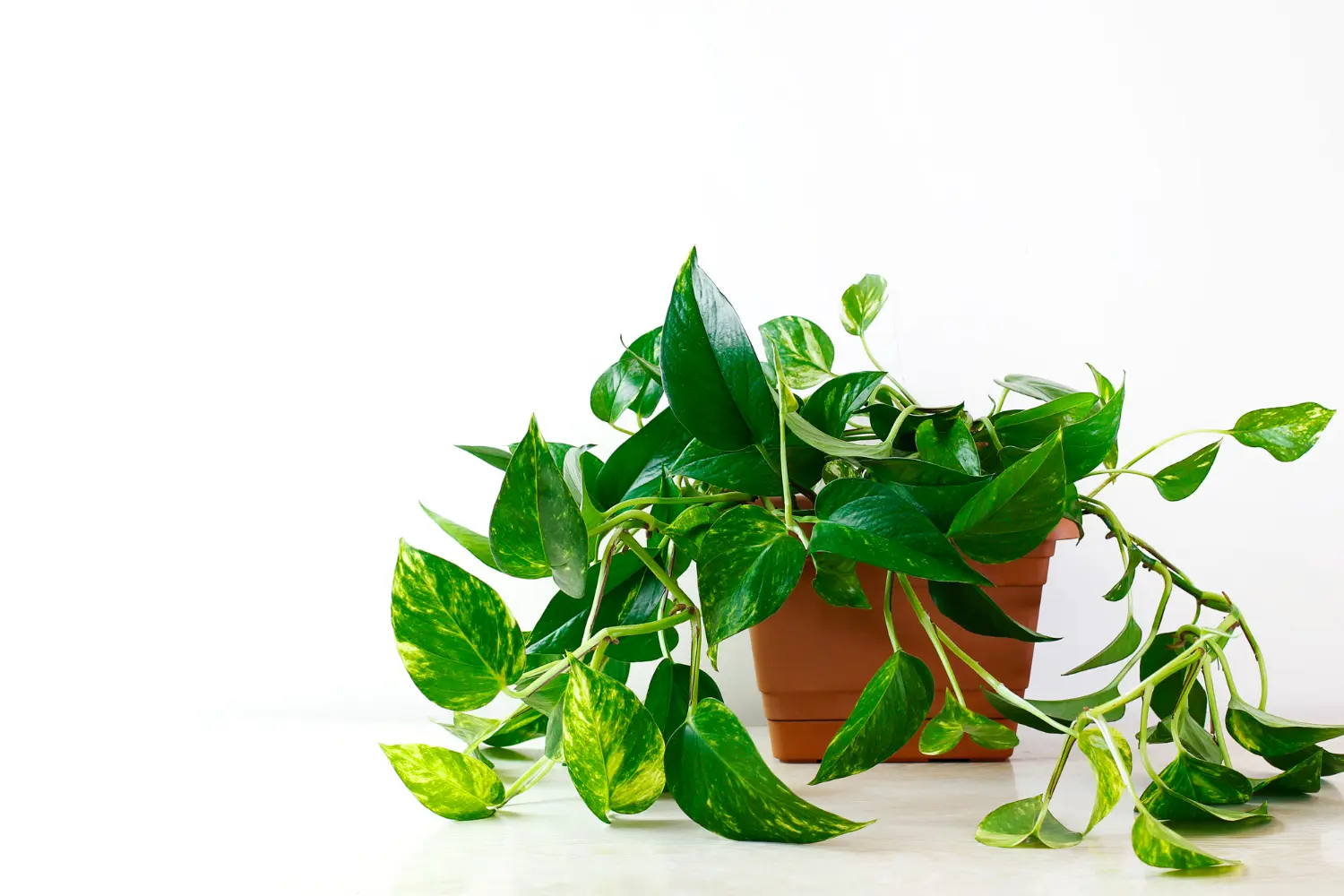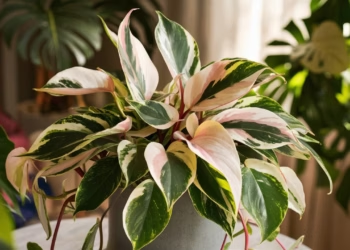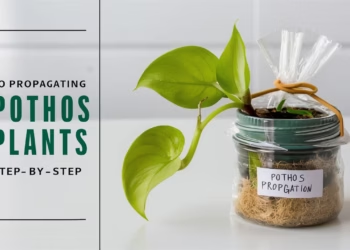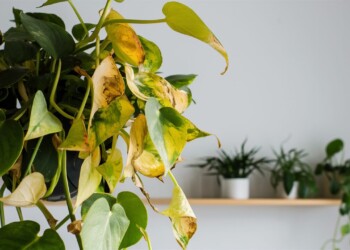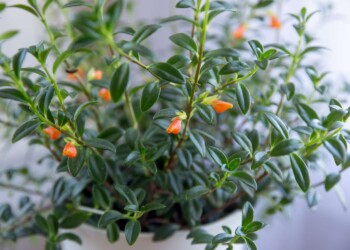Pothos plants, often called Devil’s Ivy, are a favorite among houseplant enthusiasts for their vibrant leaves and easy-care nature. Whether you’re a green-thumbed gardener or a beginner, Pothos plants can add a touch of lush greenery to your home with minimal fuss. In this guide, we’ll delve into everything you need to know about Pothos plant care and growing tips, as well as explore the different types of Pothos to help you choose the perfect one for your space. So, let’s get started!
What is a Pothos Plant?
Pothos (Epipremnum aureum) is a hardy and versatile houseplant known for its trailing vines and heart-shaped leaves. Originating from the Solomon Islands, this plant has gained popularity worldwide due to its low-maintenance requirements and its ability to thrive in a variety of environments.
- Common Names: Pothos, Golden Pothos, Devil’s Vine, Devil’s Ivy
- Botanical Name: Epipremnum aureum
- Family: Araceae
- Plant Type: Vine
- Mature Size: 20–40 ft. long, 3–6 ft. wide
- Sun Exposure: Full sun, partial shade
- Soil Type: Moist but well-drained
- Soil pH: Neutral to slightly acidic
- Bloom Time: Rarely flowers
- Flower Color: Gold/Yellow, Purple/Lavender
- Hardiness Zones: 10–12 (USDA)
- Native Areas: Asia
- Toxicity: Toxic to dogs and cats
Types of Pothos
There’s more to Pothos plants than meets the eye. While the classic Golden Pothos is a staple in many homes, there are several other types that boast unique and stunning foliage.
1. Golden Pothos
Golden Pothos, with its striking yellow and green variegation, is the most common type. Its heart-shaped leaves and resilient nature make it a perfect choice for beginners.
2. Marble Queen Pothos
Marble Queen Pothos features creamy white and green marbled leaves, offering a sophisticated look. It’s a bit slower-growing than other varieties but equally easy to care for.
3. Neon Pothos
As the name suggests, Neon Pothos stands out with its bright, chartreuse leaves. This variety can add a vibrant pop of color to any room.
4. Jessenia Pothos
Jessenia Pothos has marbled green and yellow leaves, similar to the Marble Queen but with a more subtle coloration. It’s a rare find but worth the hunt for its beauty.
5. Cebu Blue Pothos
Cebu Blue Pothos boasts silvery-blue foliage, giving it a unique and almost metallic appearance. Its leaves are more elongated compared to other types.
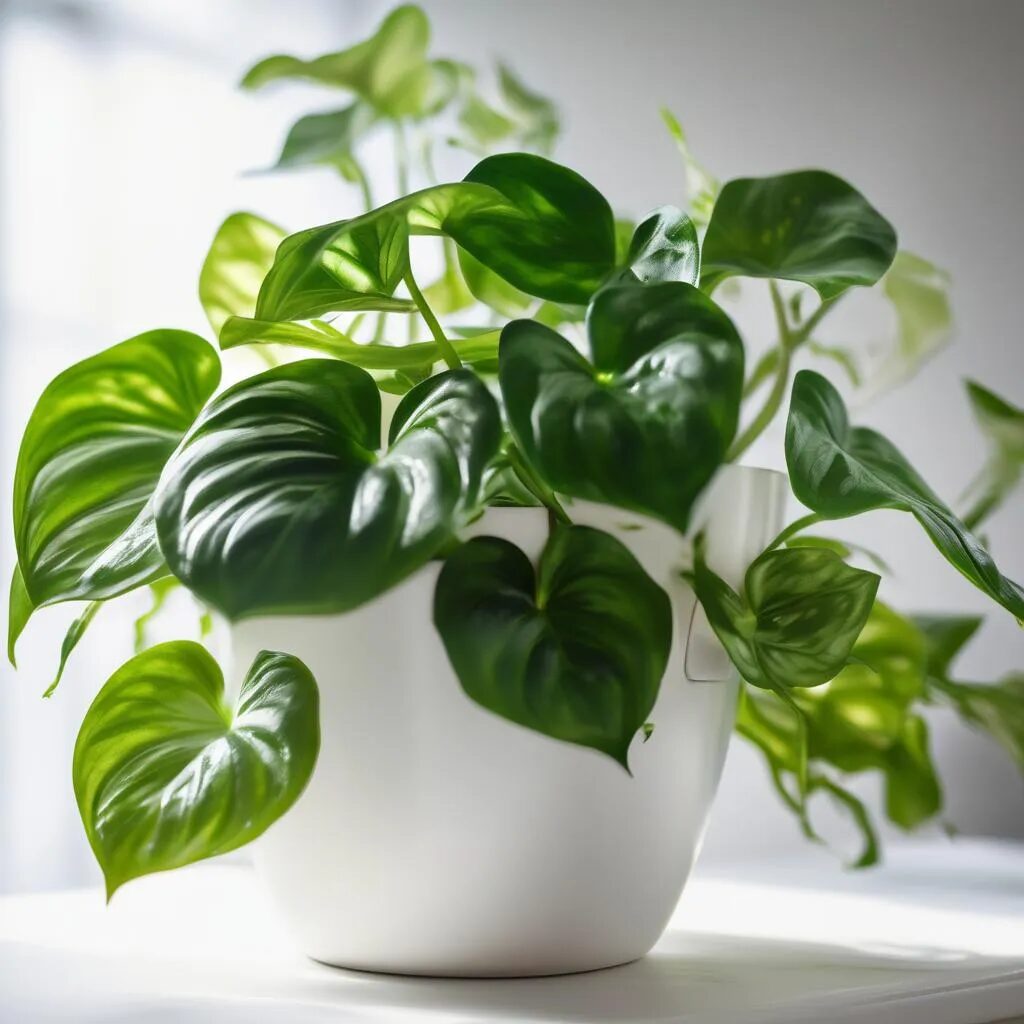
Pothos Plant Care
Light Requirements
Pothos can adapt to a variety of lighting conditions, thriving in both low-light and bright, indirect light environments. However, for optimal growth and to maintain vibrant variegation, place your pothos in a spot that receives bright, indirect sunlight. Too much direct sunlight can scorch the leaves, while too little light may cause variegated varieties to revert to solid green.
Watering Schedule
One of the best things about Pothos is their drought tolerance. Water your Pothos when the top inch of soil feels dry. Be sure not to overwater, as this can lead to root rot. If in doubt, it’s better to underwater than overwater.
Soil and Potting
Pothos plants aren’t too fussy about soil. A well-draining potting mix is ideal. You can use a standard houseplant mix or add perlite for extra drainage. Repot your Pothos every 1-2 years to give it fresh soil and more room to grow.
Humidity and Temperature
These plants prefer a humid environment but can tolerate average household humidity levels. If the air in your home is particularly dry, consider using a humidifier or placing the plant on a tray of pebbles and water. Pothos plants thrive in temperatures between 60-85°F (15-29°C).

Pruning and Propagation
Pruning
Pruning your Pothos helps keep it looking lush and prevents it from becoming too leggy. Use clean, sharp scissors to trim back any long or unruly vines. You can also remove any yellow or damaged leaves.
Propagation
Pothos are easy to propagate, making them a favorite for plant enthusiasts looking to expand their collection. Follow these steps for successful propagation:
- Transplanting: Once the roots are several inches long, transplant the cutting into a pot with well-draining soil. Keep the soil moist but not waterlogged.
- Cutting Selection: Choose a healthy vine with at least three leaves. Cut below a node using a sharp, sterile pruner.
- Preparation: Remove the lowest leaf to expose the node.
- Rooting in Water: Place the cutting in a jar of water, ensuring the leaves are above the waterline. New roots will emerge within a week to ten days.
Common Pests and Problems
While Pothos plants are generally hardy, they can occasionally encounter a few issues.
Yellow Leaves
If you notice yellow leaves, it could be a sign of overwatering or poor drainage. Ensure your plant isn’t sitting in water and that the soil drains well.
Brown Leaf Tips
Brown tips can be caused by low humidity or fluoride in tap water. Try using filtered water and increase humidity around your plant.
Pests
Pothos are relatively pest-resistant but can occasionally be affected by:
- Mealybugs: White, cotton-like clusters on stems and leaf joints.
- Spider Mites: Look for stippling on leaves and fine webbing.
- Whitefly: Tiny, heart-shaped flies that flutter when the plant is disturbed.
- Scale: Small, shell-like bumps on stems and leaves.
Treatments
- Spider Mites: Wipe down leaves with a damp cloth and apply neem oil.
- Whitefly: Spray the plant with water or insecticidal soap and use sticky traps.
- Scale: Remove by rubbing with a cotton swab dipped in rubbing alcohol.
- Mealybugs: Treat with water spray, insecticidal soap, or neem oil.
Diseases
- Root Rot: Caused by overwatering. Ensure soil drains well and reduce watering frequency.
- Bacterial Leaf Spot: Manifests as black spots on leaves. Improve air circulation and avoid overhead watering.

Pothos plants are the ultimate houseplant for both beginners and seasoned plant enthusiasts. With their stunning variety of foliage and easy-care requirements, they can brighten up any space with minimal effort. Whether you choose a classic Golden Pothos or a rare Jessenia, following the care tips in this guide will ensure your plant thrives. Happy planting!
By understanding the different types of Pothos and their specific care needs, you can enjoy the lush beauty of these versatile plants in your home. So, go ahead and add a Pothos to your plant collection – you won’t regret it!
FAQs
How often should I water my Pothos?
Water your Pothos when the top inch of soil feels dry. This typically means every 1-2 weeks, but it can vary based on your home’s humidity and temperature.
Can Pothos grow in water alone?
Yes, Pothos can grow in water alone! Simply place the cuttings in a jar of water and change the water every couple of weeks to keep it fresh.
Do Pothos plants need fertilizer?
While Pothos can survive without fertilizer, feeding them once a month during the growing season (spring and summer) can promote more vigorous growth.
Does pothos plant need sunlight?
Pothos plants do need sunlight, but they thrive in indirect or low light conditions. Direct sunlight can scorch their leaves, so it’s best to place them in bright, indirect light.
Should pothos hang or climb?
Pothos can both hang and climb. They are versatile and can be trained to climb up a support or allowed to trail from a hanging basket. The choice depends on your preference and space availability.
Where should I place my pothos?
Place your pothos in a spot where it can receive bright, indirect light. Ideal locations include near a window with filtered light or in a room with good ambient light. Avoid direct sunlight and places with drafts or extreme temperatures.
Are Pothos plants toxic to pets?
Yes, Pothos plants are toxic to pets if ingested. Keep them out of reach of cats and dogs to prevent any potential issues.
